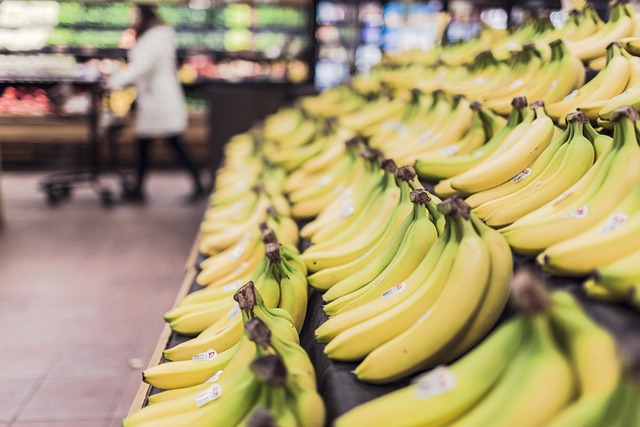Karachi's urban markets are a seasonal produce hub, driving the city's culinary identity and connecting locals with regional farmers. The diverse Karachi climate offers year-round fruits and vegetables, with distinct seasons influencing market offerings and culinary traditions. Factors like climate change, microclimates, market dynamics, and consumer preferences shape the city's agricultural landscape. Local initiatives promote sustainable food systems, ensuring fresh, seasonal produce access despite environmental challenges, and positioning Karachi as a culinary destination within Pakistan.
In urban markets, seasonal produce shifts are not just culinary trends but reflective of dynamic local landscapes. This article delves into these changes in Karachi, exploring how factors like climate, consumer demand, and market dynamics shape the city’s unique food tapestry. We analyze the implications for both consumers and producers, offering insights into the future of seasonal food in urban settings. Understanding these shifts is crucial for fostering sustainable and vibrant food communities.
- Understanding Seasonal Produce in Urban Markets
- Karachi's Unique Produce Landscape
- Factors Influencing Seasonal Shifts
- The Future of Seasonal Food in Urban Settings
Understanding Seasonal Produce in Urban Markets

In urban markets like Karachi, seasonal produce plays a vital role in shaping the culinary landscape and dietary habits of the city’s residents. Understanding what is in season helps both consumers and vendors anticipate and source fresh, locally grown fruits and vegetables. This knowledge encourages a closer connection to the region’s agricultural cycles, promoting sustainability and supporting local farmers.
Karachi’s diverse climate allows for a year-round availability of various produce, though distinct seasonal variations exist. By recognizing these shifts, marketgoers can expect to find peak harvests of specific crops during certain times of the year. This knowledge enhances the overall market experience, offering an opportunity to engage with vendors and learn about the regional agricultural calendar.
Karachi's Unique Produce Landscape

Karachi, Pakistan’s bustling metropolis, boasts a unique and vibrant produce landscape that shifts with the seasons. The city’s diverse market ecosystem reflects its rich cultural tapestry, offering a delightful array of fresh fruits, vegetables, and grains. During the spring, Karachians delight in an explosion of citrus fruits—oranges, lemons, and grapefruits—that have been carefully cultivated in nearby rural areas. As summer approaches, markets transform with melons, watermelons, and juicy pears taking center stage. The monsoons bring a cooler relief, introducing crisp greens like spinach and mustard leaves, alongside an array of exotic tropical fruits.
This seasonal shift is not merely about the availability of produce but also influences the city’s culinary traditions. Karachi’s diverse communities celebrate each season with unique dishes, showcasing the region’s agricultural bounty. Local chefs and food entrepreneurs embrace these changes, creating innovative recipes that highlight the freshest ingredients. The dynamic nature of Karachi’s produce landscape ensures a year-round celebration of flavors, making it a culinary destination within Pakistan.
Factors Influencing Seasonal Shifts

In Karachi, like many urban centers, seasonal produce shifts are influenced by a complex interplay of factors. One key element is climate change, which alters traditional growing seasons and introduces variability in weather patterns, affecting crop availability. The city’s diverse microclimates also play a role; areas with varying elevations, proximity to water bodies, or different soil types can support distinct sets of seasonal fruits and vegetables.
Additionally, market dynamics, including consumer preferences and demand, drive seasonal changes. Local cuisines and cultural festivals often dictate what produce is in high demand during specific times of the year. Furthermore, the availability and affordability of imported goods impact local farmers’ choices and pricing. In Karachi, these factors combine to create a dynamic landscape where seasonal shifts in urban markets are not just about the changing seasons but also reflect the city’s unique blend of environmental, economic, and cultural influences.
The Future of Seasonal Food in Urban Settings

As Karachi, like many urban centers, continues to grapple with environmental changes and urbanization, the future of seasonal food in its markets seems set for transformation. The traditional seasonal shifts in produce will likely be influenced by climate variability, leading to potential disruptions in the availability and accessibility of local fruits and vegetables. However, this also presents an opportunity to foster more resilient food systems.
Urban farmers’ markets and community-supported agriculture (CSA) initiatives are gaining traction in Karachi. These models promote direct connections between producers and consumers, ensuring fresh, seasonal produce year-round. By adopting sustainable farming practices and exploring innovative solutions like urban farming on rooftops and vertical gardens, Karachi’s culinary landscape could become a vibrant tapestry of locally sourced, seasonal delights.
Seasonal produce shifts in urban markets, like Karachi’s unique landscape, are influenced by a complex interplay of factors. Understanding these dynamics is crucial for fostering sustainable food systems and enhancing access to fresh, locally-sourced offerings. As we look towards the future, embracing seasonal variations can revolutionize urban eating habits, ensuring healthier diets and supporting local farmers. By navigating these shifts, cities like Karachi can create vibrant tapestries of culinary experiences that resonate with their diverse populations.
